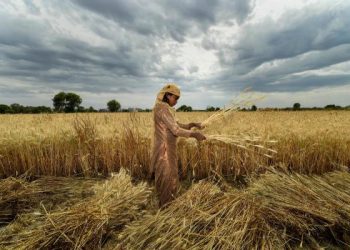Food packaging technology has come a long way since the days of simple paper and cardboard packaging. Today, food packaging is an ever-evolving industry that seeks to strike a delicate balance between preserving food freshness, product safety, and environmental sustainability.
As consumer demands and environmental concerns continue to shape the food packaging landscape, the future of food packaging is becoming increasingly more focused on sustainable and eco-friendly options.
The Importance of Food Packaging

Food packaging is critical for preserving food safety and maintaining the quality of food products. It protects food from physical, chemical, and biological contamination, helping to prevent food spoilage and extend its shelf life. The packaging also provides important information to consumers, such as product labels, nutritional information, and ingredient lists. Furthermore, food packaging plays a crucial role in the distribution and storage of food, making it an essential component of the food industry.
Packaging technology
Packaging technology refers to the design, development, and production of packaging materials and systems used to protect and preserve food products.
This includes the use of various materials, such as paper, cardboard, plastic, and glass, as well as the latest advancements in packaging technology, such as smart packaging, barrier films, modified atmosphere packaging (MAP), and biodegradable and compostable packaging.
The goal of packaging technology is to provide protection for food products, extend their shelf life, and communicate important information to consumers, while also considering factors such as sustainability and environmental impact.
Advancements in Food Packaging Technology
There have been numerous advancements in food packaging technology in recent years. Some of the most notable advancements include:
- Smart Packaging: Smart packaging uses technology such as sensors, indicators, and microchips to provide information about the product, including its freshness and safety. For example, some smart packaging incorporates time-temperature indicators that change color to show whether a product has been stored at the correct temperature, helping to prevent food spoilage.
- Barrier Films: Barrier films are designed to prevent the ingress of gases, such as oxygen and carbon dioxide, that can cause food spoilage. Barrier films can be made from materials such as aluminum, polyethylene, and polypropylene, and can be combined with other materials to create multi-layer films that provide enhanced barrier properties.
- Modified Atmosphere Packaging (MAP): MAP involves controlling the atmosphere inside the packaging to extend the shelf life of perishable products. This can be achieved by replacing the air inside the packaging with a mix of gases that slows down the rate of spoilage.
- Biodegradable and Compostable Packaging: Biodegradable and compostable packaging materials are designed to break down quickly and naturally in the environment, reducing their impact on the environment compared to traditional plastic packaging.
The Future of Food Packaging

Sustainability is becoming an increasingly important issue for consumers, and the food packaging industry is no exception. The focus on sustainability is driving the development of new food packaging materials and technologies, including:
- Renewable and Recyclable Packaging: Renewable and recyclable packaging materials are being developed to reduce the environmental impact of food packaging. This includes materials made from plant-based materials, such as cornstarch, sugarcane, and cellulose, that can be easily recycled or composted.
- Biodegradable Packaging: Biodegradable packaging is becoming increasingly popular as consumers look for more sustainable options. Biodegradable packaging materials are designed to break down quickly and naturally in the environment, reducing their impact on the environment compared to traditional plastic packaging.
- Edible Packaging: Edible packaging is a relatively new concept, but it has the potential to revolutionize the food packaging industry. Edible packaging materials, such as edible films made from plant-based materials, can be used to package food products, eliminating the need for traditional packaging materials and reducing waste.
- Intelligent Packaging: Intelligent packaging is becoming more common as the use of technology in food packaging continues to grow. This includes smart packaging that provides information about the product, such as its freshness and safety and smart labeling that provides information about the product’s origin and production process. Intelligent packaging will help consumers make informed decisions about the products they purchase, leading to a more sustainable and environmentally friendly food packaging industry.
Conclusion
The food packaging industry is undergoing a transformation as consumers demand more sustainable and eco-friendly options. The focus on sustainability is driving the development of new food packaging materials and technologies, including renewable and recyclable packaging, biodegradable packaging, edible packaging, and intelligent packaging.
The future of food packaging will be characterized by a continued push for sustainability, and the use of technology to provide consumers with greater transparency and information about the products they purchase. As the food packaging industry continues to evolve, it will play an increasingly important role in protecting food safety, maintaining the quality of food products, and reducing the environmental impact of food packaging.











